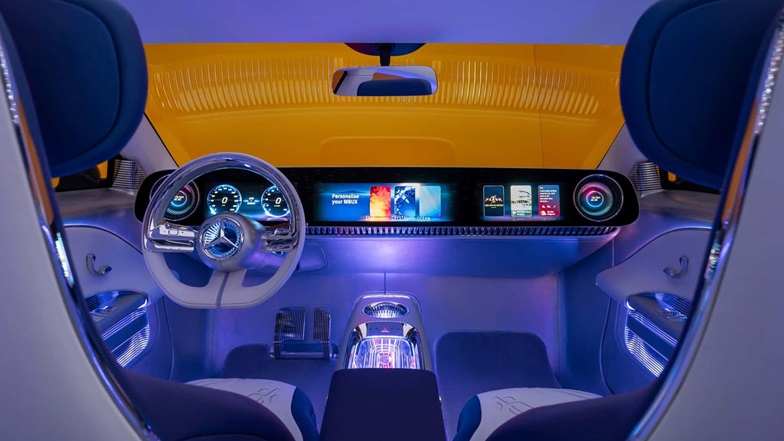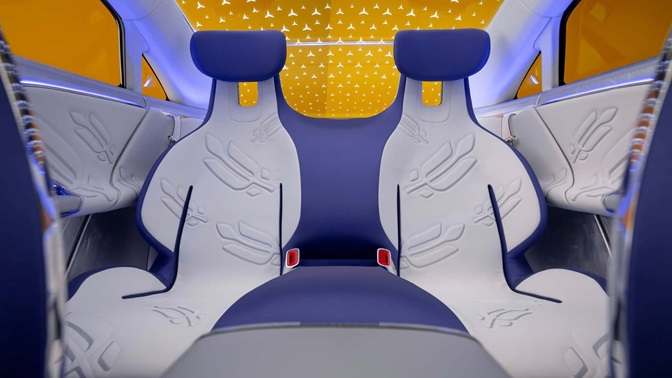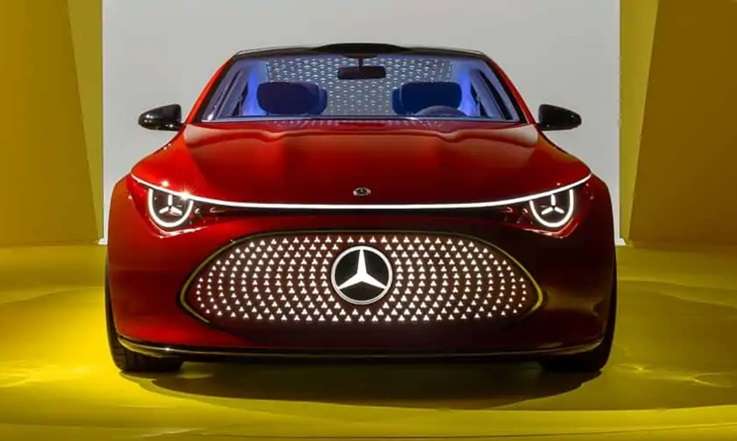As artificial intelligence (AI) continues to evolve, it’s becoming an increasingly important part of the driving experience. From smart assistants that respond to basic commands to more advanced systems that predict your needs, AI is rapidly transforming how we interact with our vehicles. One of the latest advancements in this area comes from Mercedes-Benz, which is introducing a new AI-powered conversational navigation feature that could change how drivers interact with their cars.

The German automaker, already a leader in innovative car technology, is integrating Google Cloud’s Automotive AI Agent into its vehicles, a move that promises to make its voice assistant even more intuitive, responsive, and capable of handling more complex requests. Here’s everything you need to know about this exciting new feature, and how it could make driving even easier.
AI at the Heart of Mercedes-Benz’s New Navigation Feature
Mercedes-Benz has been exploring the potential of AI for a while, especially after integrating ChatGPT into some of its cars starting last year. The AI-powered voice assistant has already helped drivers perform basic tasks like finding nearby locations or checking weather updates. But with its new conversational navigation feature, Mercedes is taking things a step further by making voice interactions more natural and efficient.
At the core of this new functionality is Google Cloud’s Automotive AI Agent, which is powered by Google’s Gemini chatbot. This feature leverages Google’s vast database, including Google Maps and the wealth of reviews and ratings it holds. Now, instead of just telling your car to find you a nearby restaurant or charging station, you can engage in a more detailed, free-flowing conversation with the system to get even more tailored recommendations.
For example, if you ask the assistant for a nearby restaurant, it won’t just point you to the closest option—it will take into account customer reviews, type of cuisine, and other factors. As Mercedes-Benz’s CEO, Ola Källenius, demonstrated in a preview, you could ask the assistant something like, “Hey Mercedes, I’m a little hungry. Any suggestions for dinner in Vegas?” and the assistant might reply, “The SW Steakhouse serves prime steaks and seafood, offering a classic and elegant dining experience.”
What sets this apart is the ability to follow up with additional questions, like, “What’s the best Italian place?” or even “Can I charge my car nearby?” The system can understand and respond to these open-ended questions, offering smart recommendations, such as finding an Italian restaurant and a nearby charging station in one seamless exchange.

How Conversational Navigation Works
So, how exactly does this work? In short, Mercedes-Benz’s new system allows you to interact with the MBUX Virtual Assistant just like you would with another person—asking questions, receiving responses, and even following up with related queries. It’s not just about pointing you in the right direction; it’s about creating a more personalized and engaging experience.
The system works in several key ways:
- Natural Dialogue: Instead of asking rigid, formulaic commands like “Find me a restaurant,” the assistant allows for more open-ended questions, such as “Could you guide me to the nearest fine-dining restaurant for a unique culinary experience?” This makes conversations with the assistant feel more natural.
- Follow-Up Questions: Unlike traditional voice assistants, which often require you to start from scratch each time, Mercedes’ system allows you to ask follow-up questions. For example, after being shown a restaurant, you could ask, “Does it have good reviews?” or “What is the chef’s signature dish?” The assistant can carry on the conversation smoothly, remembering context and offering relevant answers.
- Memory and Continuity: One of the more exciting aspects of the new system is its ability to remember past interactions. This means you won’t need to repeat yourself or re-enter information during your journey. If you ask about a restaurant and then later inquire about nearby charging stations, the system can recall your earlier requests and integrate them into future responses.
- Seamless Integration: All of this happens through Mercedes’ existing voice control system, meaning you don’t have to worry about learning new commands or interfaces. Just say “Hey Mercedes” and ask your question. Behind the scenes, the AI switches between different systems as needed to deliver a smooth and coherent experience.
When Can You Expect to Use This Feature?
The 2025 Mercedes CLA will be the first vehicle to feature this new AI-powered navigation system. As part of the car’s next-generation electric platform and MB.OS 1.0 software, the conversational navigation feature will be integrated into future models as well. After the CLA launch, Mercedes plans to roll out the feature to millions of existing vehicles through over-the-air software updates, making it accessible to a wide range of customers.
It’s important to note that while this system is powered by Google’s Automotive AI Agent, Mercedes’ existing AI tools like ChatGPT will continue to be available. The two AI systems will serve different functions, working together to provide a more comprehensive experience. From the user’s perspective, it will feel like a smooth handoff between the two without any noticeable interruptions.

Why This Is a Big Deal for Drivers
While voice assistants are already becoming a common feature in many cars, they often come with limitations. Mercedes-Benz’s new system addresses many of these issues by enabling complex, multi-turn conversations that are far more natural and useful than what you might find in other vehicles. The real-time search powered by Google Maps also offers a level of personalization that traditional navigation systems simply can’t match.
For example, drivers looking for a place to charge their EV will benefit from the system’s ability to factor in charging station availability along with the destination. Many drivers struggle with finding fast-charging stations on the go, especially when navigating through unfamiliar areas. With this new AI-powered assistant, the process of finding charging stations could become much simpler and faster, eliminating one of the biggest pain points of EV ownership.
Furthermore, Mercedes-Benz is focused on making these features intuitive and easy to use. According to CEO Källenius, the system is designed to be so simple that even a five-year-old or a board member could use it. This emphasis on ease of use is crucial, as many consumers are still figuring out how to incorporate AI into their daily lives.
Mercedes-Benz’s new conversational navigation feature is just one example of how AI will continue to shape the future of driving. With its ability to handle complex interactions, remember context, and provide useful recommendations, this system promises to enhance the driving experience in ways that go beyond traditional navigation.
As more automakers look to integrate AI into their vehicles, it’s clear that the future of driving will be increasingly shaped by smart assistants that offer more than just basic functionality. Whether it’s guiding you to your destination, finding a great restaurant, or helping you charge your EV, the role of AI in our cars is only just beginning to unfold. And with Mercedes leading the way, we can expect even more exciting innovations in the near future.
Related Post
